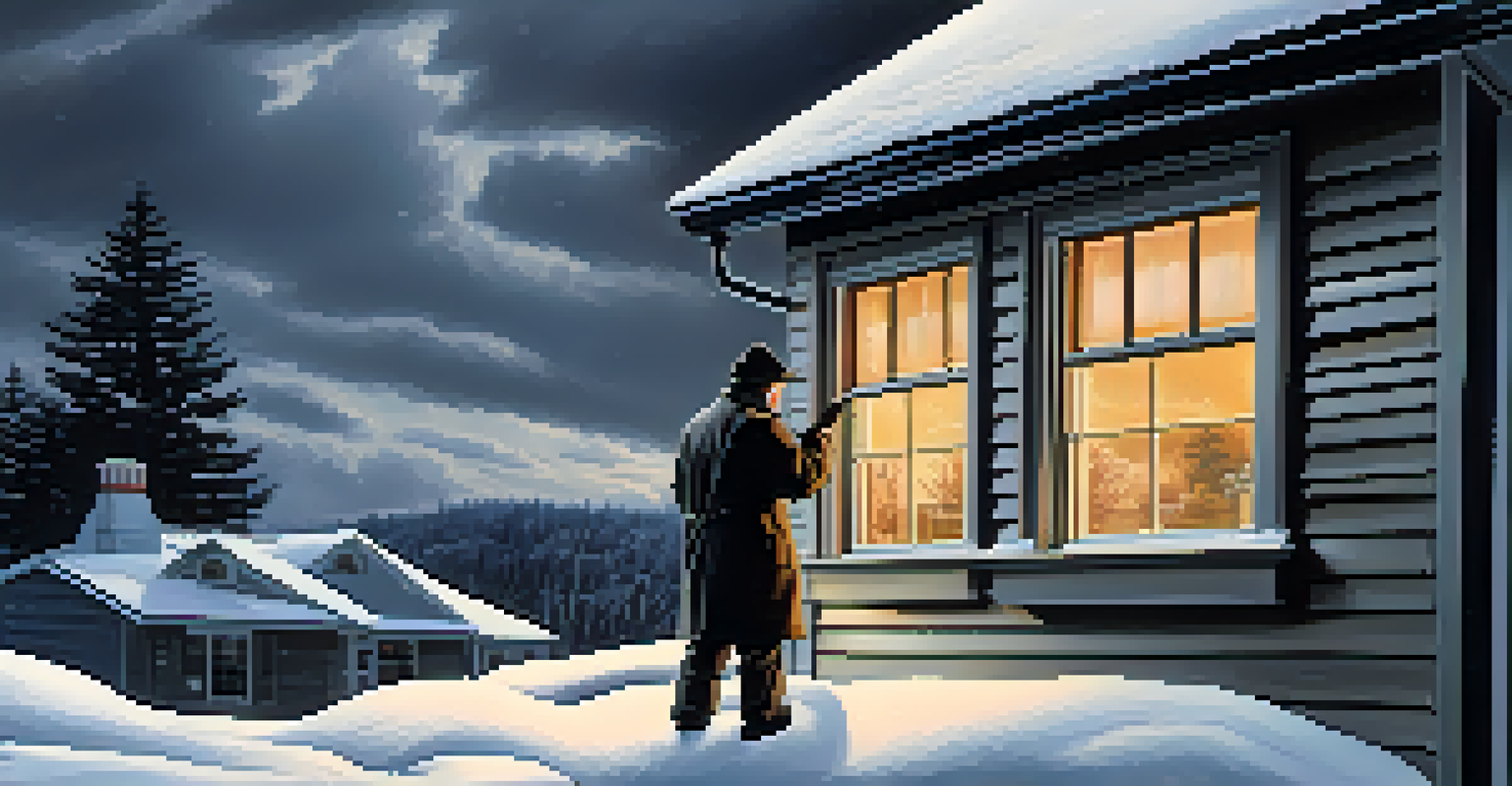Preparing for a Home Inspection in Bad Weather

Understanding the Impact of Bad Weather on Inspections
Bad weather can significantly affect the home inspection process, making it crucial for homeowners to prepare accordingly. Rain, snow, or strong winds can obscure important details, like roof conditions or drainage issues. Understanding these impacts helps you anticipate potential challenges during the inspection.
Weather is a great metaphor for life – sometimes it's good, sometimes it's bad, and there's nothing much you can do about it but carry an umbrella.
For instance, a heavy downpour might prevent the inspector from adequately checking the roof for leaks. Similarly, snow accumulation can hide signs of structural issues in the foundation or siding. Being aware of these factors allows you to address them proactively.
Ultimately, preparing for a home inspection in bad weather means being ready to discuss these concerns with your inspector. Clear communication can lead to a more thorough evaluation, ensuring that nothing is overlooked due to weather conditions.
Scheduling Your Inspection Wisely
Timing is everything, especially when it comes to scheduling a home inspection during inclement weather. If possible, choose a day when the forecast looks promising, even if it means waiting a bit longer. This way, both you and the inspector can work more efficiently without the added stress of adverse weather.

Additionally, if you can't avoid a rainy or snowy day, consider scheduling the inspection for earlier in the day. This timing allows for more daylight, which can help the inspector identify potential issues that might be hidden in shadows or poor visibility later in the day.
Weather Impacts Home Inspections
Bad weather can obscure critical details during home inspections, making preparation essential.
By taking the time to carefully plan the inspection date, you can enhance the quality of the evaluation, ensuring that the inspector has the best possible conditions to work in.
Preparing Your Home for Inspection in Bad Weather
Before the inspection, it’s essential to prepare your home, particularly in bad weather. Ensure that all areas are accessible and free from hazards like slippery walkways or pools of water. This not only protects the inspector but also shows you’re serious about the process.
The best way to predict the future is to create it.
Make sure to clear any debris from gutters and downspouts to allow for proper drainage during heavy rain. This simple step can help prevent water damage and show the inspector that you've been proactive with home maintenance.
Lastly, if snow is present, shovel pathways to important areas like the roof and basement. This effort demonstrates your dedication to making the inspection as thorough and efficient as possible.
Documenting Weather-Related Issues
If your home has been affected by previous bad weather, it’s important to document these issues before the inspection. Take photos of any water damage, leaks, or other weather-related problems, and compile them into a folder. This documentation can provide valuable context for the inspector.
For example, if you notice a leak after a heavy rain, make a note of when it started and how it has progressed. Sharing this information can lead to more focused inspections, allowing the inspector to pay closer attention to problematic areas.
Plan Inspections Around Weather
Scheduling inspections on favorable weather days enhances the quality and thoroughness of the evaluation.
Being transparent about weather-related concerns not only builds trust but also helps ensure that the inspector provides a comprehensive evaluation based on all available information.
Communicating with Your Inspector
Effective communication with your inspector is key, especially during bad weather. Before the inspection, discuss any concerns you have regarding the weather’s impact on the evaluation. This dialogue can help the inspector tailor their approach to address your specific worries.
For instance, if you're concerned about potential roof leaks, let the inspector know. They may prioritize this area or check for signs of water intrusion more thoroughly, ensuring you get the information you need.
Open communication can also help manage expectations about what might be observed during the inspection. If the weather hampers visibility, the inspector can inform you about any limitations in their evaluation.
Using Weather as a Learning Opportunity
Bad weather can also serve as an opportunity to learn more about your home’s resilience. During the inspection, pay attention to how your home handles adverse conditions, such as drainage and insulation. This knowledge can help you make informed decisions about future improvements.
For example, if your basement shows signs of moisture during rain, it might indicate a need for better waterproofing solutions. Understanding these aspects can empower you to take action and prevent future issues.
Document Weather-Related Issues
Documenting past weather-related problems helps the inspector focus on key areas during the evaluation.
Moreover, asking the inspector for advice on weatherproofing your home can lead to valuable insights. This proactive approach not only enhances your home's longevity but also strengthens its value.
Post-Inspection Steps After Bad Weather
Once the inspection is complete, it’s crucial to follow up on any findings, especially those related to bad weather. Review the inspector's report carefully and prioritize areas that need immediate attention. This proactive approach can help mitigate further damage and maintain your home's integrity.
If the inspector noted any weather-related issues, consider getting estimates for repairs as soon as possible. Addressing these problems quickly can prevent more extensive damage down the line, saving you time and money.

Finally, keep an eye on how your home fares in subsequent weather events. This ongoing vigilance can help you catch new issues early, ensuring your home remains safe and comfortable throughout the seasons.